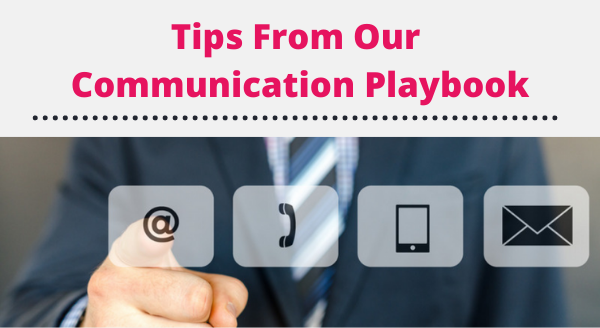
This post was originally published on Hannon Hill CEO Kat Liendgens' personal blog.
Effective internal and external communication has always been a key ingredient for a positive and productive company culture, but it has become even more important since the outbreak of COVID-19. While we’ve been lucky enough to work from home in the past year, we have certainly learned some lessons and identified ways in which we can improve. In fact, we recently created a communication playbook, intended to provide best practices and guidelines. Here are some of the tips it contains:
Especially in a time where you can’t just walk up to a colleague’s desk and ask them a question, you need to establish expectations around response times. For instance, we strive to respond to all emails within 24 hours or less. Even if we don’t have all of the information that someone is requesting, we still respond and provide the sender with an ETA. For internal communication, we mostly use Slack, so we also captured guidelines for that in order to help team members find the right balance between heads-down time and communication. For example, be as specific with your requests as possible. What do you need, why do you need it, and when do you need it? We also recommend agreeing on acronyms such as “ayc” (at your convenience” = no rush on this) and “rq” (“really quick” = I’m only giving you a quick answer right now as I am not currently available), and even emojis such as a checkmarks in order to acknowledge the receipt of a message. We want to minimize the number of instances when the sender has no idea if the recipient has seen the message.
Sometimes, we fall into bad habits without realizing that they can stand in the way of good communication. That’s why our playbook includes phrases to avoid. “Like I said”/”As I said before” or variations thereof don’t really serve a purpose other than implying that the other person didn’t understand you before or wasn’t paying attention and that you were right all along. “I’m sorry if” should always be replaced with “I’m sorry that”, because “if” means that it’s up to the feelings of the other person whether you’re sorry or not. Own your actions and their impact on others. Another phrase to avoid is “We apologize for the inconvenience”. The word inconvenience has a tendency to sound as if you’re minimizing the problem or challenge that your customers are facing. A sincere apology should convey that you understand the degree in which you negatively affected them.
For many of us, email takes up a significant portion of our day. To streamline email communication, we included recommendations in our playbook. For example, if someone has been copied on an email who doesn’t really need to be included, move them to BCC and inform the other recipients. In addition, if several people are copied in an email or thread, bold the name of the person from whom you need a response. Keep your emails as concise as possible. If someone has been passive in a long email or Slack thread, and you want their input, summarize the main points of the thread up until this point instead of asking them to go back and (re)read everything.
It is helpful for your team members to understand when to use which communication medium, so be sure to cover this topic in your playbook as well. If you intend to expand knowledge and information sharing and achieve greater alignment, you may recommend writing things down instead of having private conversations, and keeping discussions posted in public channels instead of private ones. Slack and emails may be good media for asynchronous communication, but not so great when you need to resolve a conflict, reduce friction, or find yourselves in an awkward situation. In those cases, video calls tend to be much more effective. On the other hand, too many video conferences can cause fatigue, so don’t overdo it – sometimes a phone call is sufficient.
One of the biggest challenges of non face to face communication is to convey tone. Have you ever seen a harsh comment that is followed by a smiley face? Confusing, right? While we try to educate our team members on communicating clearly regardless of the medium, there’s always room for misinterpretation. We also can’t deny the fact that empathy levels can decrease when you’re not seeing your teammates in person for over a year, as it has been the case during the pandemic. Reiterate how important it is to focus on facts and to not make any assumptions. Except for one: Assume good intent. It will make you happier and, as a result, a better communicator.
Our communication playbook is a living, breathing document, and all team members are encouraged to share their thoughts and suggestions. What are yours?
Last Updated: Mar 30, 2021 11:00 AM